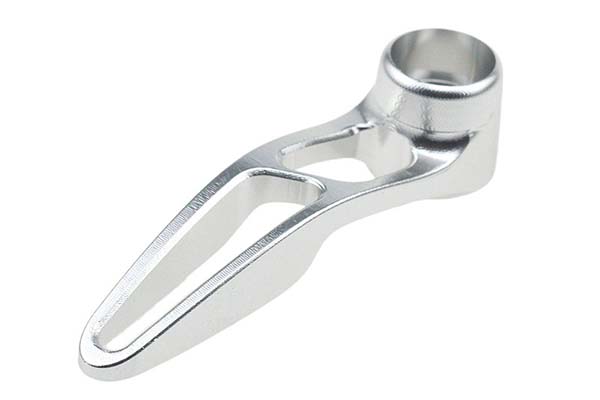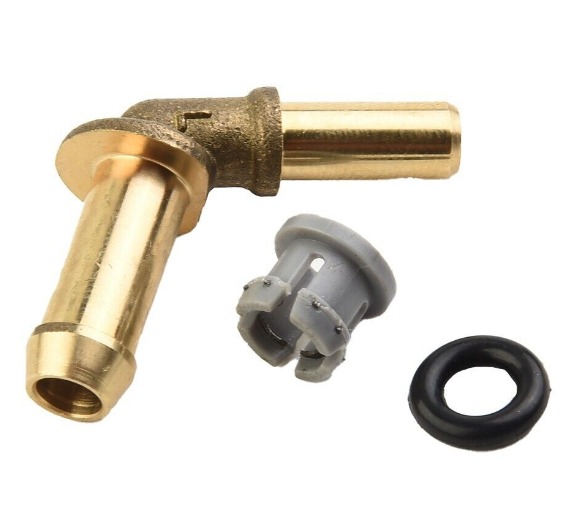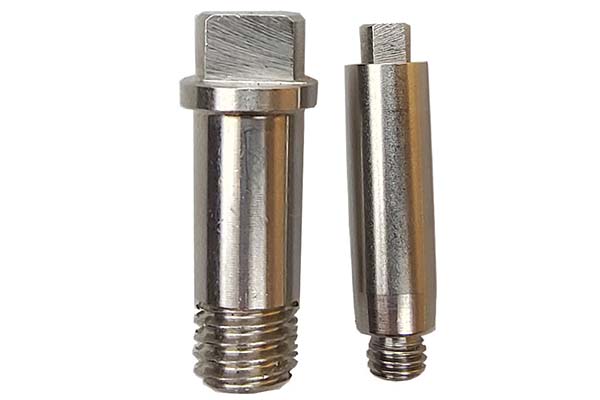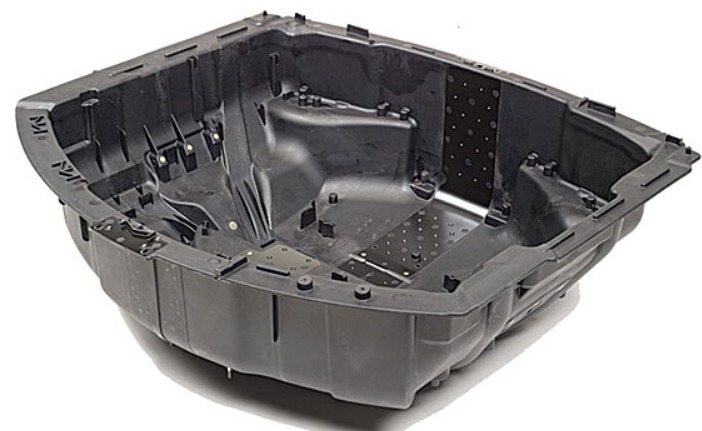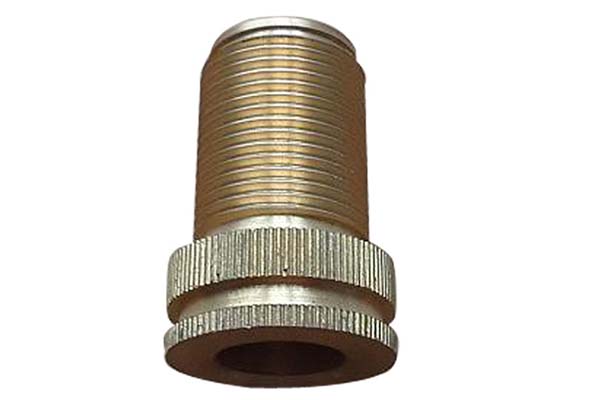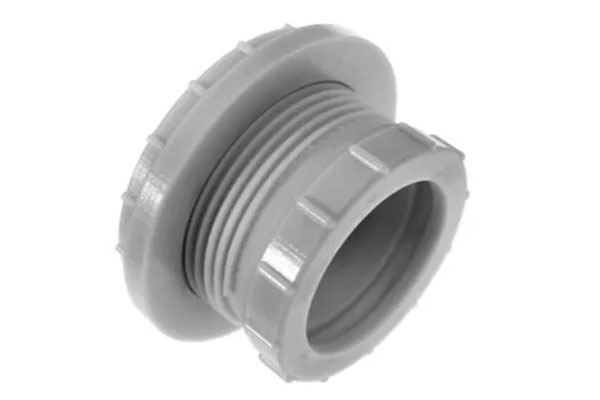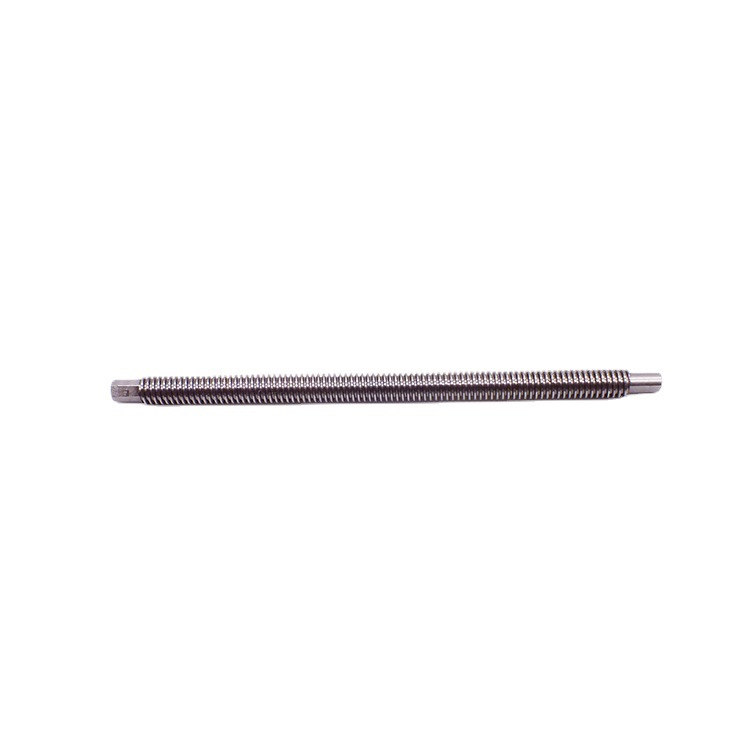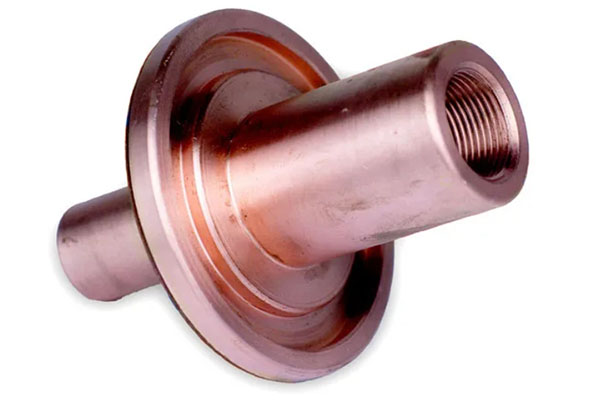CNC machining of AL2024 in T351 and T6 conditions presents unique challenges rooted in their distinct heat treatment histories and mechanical properties. AL2024’s high copper content (4.5%) enhances its strength but also makes it highly abrasive, accelerating tool wear and reducing tool life compared to more machinable alloys like 6061. The T351 and T6 tempers exhibit contrasting machining behaviors: T351’s stress-relieved state offers better workability but retains high tensile strength, while T6’s full artificial aging results in maximum hardness, increasing cutting forces and the risk of chipping. Both conditions are prone to work hardening; repeated cutting in the same area can raise material hardness by 15-20%, requiring frequent adjustments to cutting parameters to maintain precision machining. Achieving tight tolerance control is further complicated by their moderate thermal conductivity (121 W/(m·K)); uneven heat distribution during machining can cause subtle warping, affecting dimensional accuracy in critical parts like aerospace components. This guide addresses these pain points, offering expert strategies to master CNC machining of AL2024 T351/T6.
Material Properties of AL2024 T351/T6
AL2024 in T351 and T6 conditions boasts properties that make it indispensable in high-stress applications, while influencing its machinability:
- T351 condition: Achieved through solution heat treatment, quenching, natural aging, and stress relief by stretching (1-3% elongation). It offers a tensile strength of 469 MPa, yield strength of 324 MPa, and 10% elongation, balancing strength and ductility for parts requiring post-machining forming.
- T6 condition: Produced via solution heat treatment, quenching, and artificial aging (121°C for 24 hours), delivering maximum strength—tensile strength of 483 MPa, yield strength of 379 MPa—but lower elongation (8%), making it more prone to cracking during machining.
- Corrosion resistance: Moderate in both conditions, with susceptibility to intergranular corrosion, requiring surface finish treatments like anodizing for protection in humid or marine environments.
- Strength-to-weight ratio: Exceptional (200 MPa·cm³/g), surpassing many steels, making it ideal for weight-critical aerospace components and automotive parts.
| Property | T351 Condition | T6 Condition |
| Tensile Strength | 469 MPa | 483 MPa |
| Yield Strength | 324 MPa | 379 MPa |
| Elongation | 10% | 8% |
| Brinell Hardness | 120 HB | 130 HB |
| Workability | Good | Fair |
CNC Machining Processes for AL2024 T351/T6
The CNC machining processes for AL2024 T351/T6 require tailored approaches to accommodate their temper-specific properties:
- Milling: T351 performs well with spindle speeds of 8,000-12,000 RPM and feed rates of 0.15-0.25 mm/tooth, using 4-flute carbide end mills to manage chip evacuation. T6 requires slower speeds (6,000-10,000 RPM) and lower feed rates (0.1-0.2 mm/tooth) to reduce cutting forces and avoid chipping.
- Turning: Suitable for cylindrical parts like shafts and bushings. T351 benefits from spindle speeds of 3,000-5,000 RPM and feed rates of 0.12-0.18 mm/rev, while T6 requires 2,500-4,000 RPM and 0.1-0.15 mm/rev to minimize tool deflection.
- Drilling: Carbide drills with 135° point angles and polished flutes prevent delamination. Peck drilling (0.5-1 mm depth increments) is critical for T6 to clear chips and reduce heat buildup, while T351 can tolerate continuous drilling with proper coolant flow.
- Cutting parameters optimization: Coolant pressure of 40-50 bar for T6 (to manage higher heat generation) and 30-40 bar for T351, with flow rates of 15-20 L/min to dissipate heat and lubricate the cutting edge.
Heat Treatment of AL2024 T351/T6
Heat treatment defines the unique characteristics of T351 and T6, directly impacting their machinability:
- T351 process:
- Solution heat treatment at 495°C for 1 hour to dissolve alloying elements.
- Water quenching to trap elements in supersaturated solid solution.
- Natural aging at room temperature for 96 hours to develop strength.
- Stress relief by stretching 1-3% to eliminate residual stresses, improving workability and reducing machining warpage.
- T6 process:
- Same solution heat treatment and quenching as T351.
- Artificial aging at 121°C for 24 hours to precipitate fine, uniform strengthening phases, maximizing hardness and strength but reducing ductility.
- Grain structure: Both conditions feature fine, uniform grains, but T6’s artificial aging creates a more dense precipitate distribution, increasing cutting resistance compared to T351’s coarser, naturally aged precipitates.
Mechanical Characteristics of AL2024 T351/T6
The mechanical characteristics of T351 and T6 dictate their machining requirements and application suitability:
- Tensile and yield strength: T6 exceeds T351 by 3-5%, making it ideal for load-bearing structural elements but more challenging to machine due to higher cutting forces.
- Fatigue resistance: T351 offers superior fatigue life (10^7 cycles at 172 MPa) compared to T6 (10^7 cycles at 165 MPa) due to its stress-relieved state, making it preferred for vibration-prone automotive parts.
- Hardness testing: T6 registers 130 HB on the Brinell scale, vs. 120 HB for T351—hardness that increases tool wear rates by 20-30% in T6 machining.
- Impact resistance: T351 absorbs 10-15% more energy before fracture than T6, reducing the risk of part damage during handling and machining.
Applications and Uses of AL2024 T351/T6
CNC machined AL2024 T351/T6 parts excel in high-performance applications:
- Aerospace components: T351 is used for wing skins, fuselage panels, and ribs requiring post-machining forming, while T6 suits landing gear components and engine mounts needing maximum strength.
- Automotive parts: T351 finds use in racing car chassis and suspension arms, while T6 is ideal for high-stress components like brake calipers and transmission brackets.
- Marine applications: T351’s stress relief makes it suitable for boat hull frames and hardware, with surface finish treatments enhancing corrosion resistance in saltwater environments.
- Industrial machinery: T6 is preferred for tooling plates and die holders, while T351 suits parts requiring minor bending after machining, such as conveyor system brackets.
Quality Control and Standards for AL2024 T351/T6
Rigorous quality control ensures AL2024 T351/T6 parts meet industry standards:
- Inspection methods:
- Coordinate measuring machines (CMMs) verify dimensional accuracy to ±0.02 mm for critical features, with T6 requiring tighter controls due to its lower ductility.
- Non-destructive testing (NDT) including ultrasonic testing detects subsurface defects in aerospace components, while eddy current testing identifies surface cracks.
- Surface roughness: Profilometers check for Ra 0.8-1.6 μm, with T351 achieving smoother finishes more easily than T6, which may require secondary grinding to remove micro-chips.
- Standards compliance: Parts must meet ASTM B209 (aluminum alloy sheet) and AMS 4036 (T351) / AMS 4039 (T6) specifications, with certification of heat treatment processes to ensure material consistency.
- Process validation: Statistical process control (SPC) monitors cutting parameters and tool wear, reducing part variation by 20-25% in high-volume production.
Yigu Technology's Perspective
Yigu Technology specializes in CNC machining AL2024 T351/T6, leveraging expertise in their unique properties. For T351, we use carbide tools with TiAlN coatings and optimized feed rates (0.15-0.2 mm/tooth) to balance productivity and surface finish. For T6, we employ ultra-hard carbide inserts (93 HRA) and lower spindle speeds to minimize tool wear and chipping. Our precision machining centers feature thermal compensation systems to maintain dimensional accuracy despite heat-related expansion. Quality control includes CMM inspections and NDT, ensuring compliance with AMS standards for aerospace components. We recommend T351 for parts needing formability and T6 for maximum strength, optimizing processes to deliver cost-effective, reliable results.
FAQ
- Which is more machinable: AL2024 T351 or T6?
T351 is more machinable due to its stress-relieved state and higher ductility, allowing higher feed rates and reducing chipping risk. T6’s full artificial aging increases hardness by 8-10% compared to T351, requiring slower speeds and more frequent tool changes.
- How to prevent work hardening in AL2024 T351/T6 machining?
Minimize repeated cuts in the same area, use sharp carbide tools with polished flutes, and maintain cutting parameters within recommended ranges (e.g., 8,000-10,000 RPM for T6). Regular coolant flushing also helps by reducing friction and heat buildup.
- What surface treatments are recommended for AL2024 T351/T6?
Type II anodizing (20-30 μm thick) enhances corrosion resistance for general applications, while Type III hard anodizing (50-75 μm) is ideal for aerospace components needing wear resistance. For marine use, chromate conversion coatings provide additional protection against saltwater.
